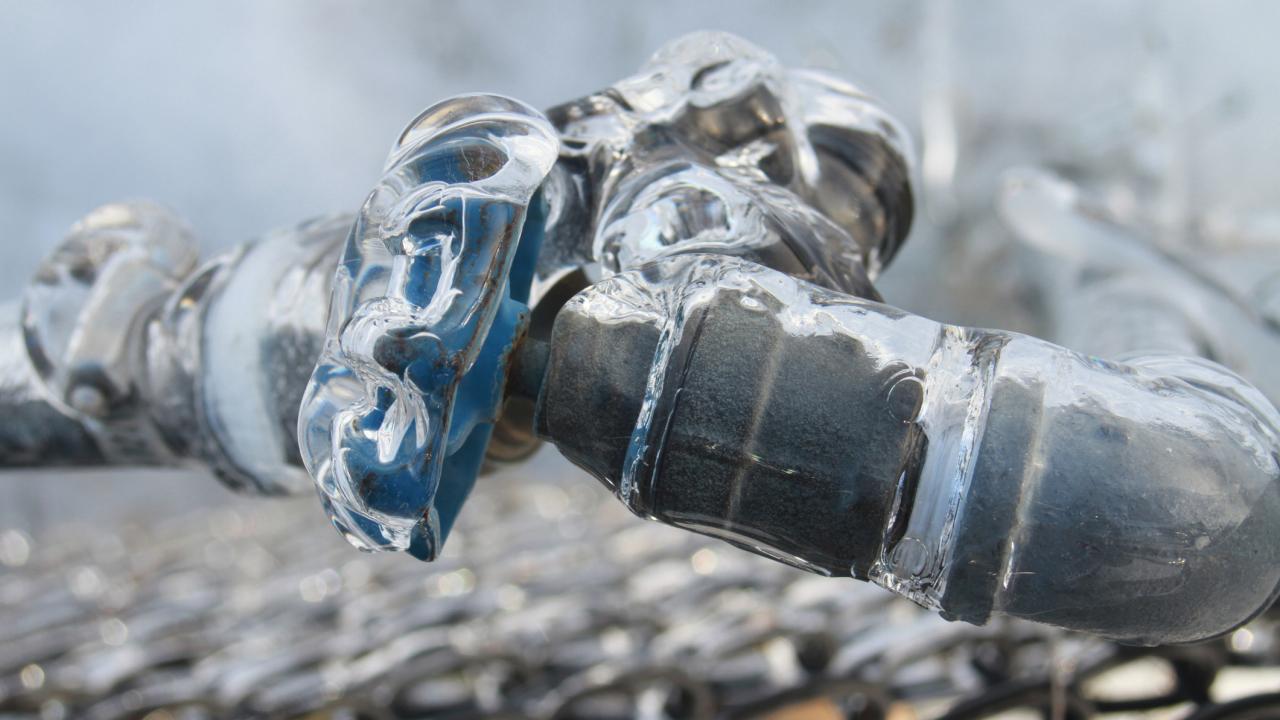Protecting Pipes from Cold Weather: Top Strategies
Protecting Pipes from Cold Weather: Top Strategies
Blog Article
How do you feel in regards to How To Avoid Freezing Pipes?

Winter can ruin your pipes, specifically by freezing pipes. Below's exactly how to stop it from occurring and what to do if it does.
Intro
As temperatures drop, the danger of frozen pipelines increases, potentially leading to costly repair services and water damages. Recognizing exactly how to prevent frozen pipes is critical for home owners in cool environments.
Understanding Frozen Pipelines
What creates pipelines to freeze?
Pipelines freeze when subjected to temperatures listed below 32 ° F (0 ° C) for prolonged durations. As water inside the pipes freezes, it increases, taxing the pipeline walls and possibly creating them to burst.
Dangers and problems
Frozen pipelines can bring about water system disturbances, residential property damages, and expensive repair work. Ruptured pipelines can flooding homes and create considerable architectural damages.
Signs of Frozen Pipes
Identifying icy pipelines early can stop them from rupturing.
How to identify icy pipes
Search for decreased water flow from faucets, unusual odors or noises from pipes, and noticeable frost on exposed pipelines.
Avoidance Tips
Shielding vulnerable pipelines
Wrap pipes in insulation sleeves or utilize warm tape to protect them from freezing temperature levels. Concentrate on pipes in unheated or outside areas of the home.
Home heating strategies
Keep indoor areas properly heated, particularly areas with pipes. Open cabinet doors to enable cozy air to flow around pipelines under sinks.
Protecting Exterior Plumbing
Yard hoses and outdoor faucets
Detach and drain garden pipes prior to winter months. Set up frost-proof faucets or cover outdoor taps with insulated caps.
What to Do If Your Pipelines Freeze
Immediate actions to take
If you think icy pipelines, keep faucets open to eliminate pressure as the ice thaws. Use a hairdryer or towels taken in warm water to thaw pipelines gradually.
Long-Term Solutions
Structural adjustments
Think about rerouting pipelines away from exterior walls or unheated locations. Include additional insulation to attics, basements, and crawl spaces.
Updating insulation
Invest in premium insulation for pipelines, attics, and walls. Appropriate insulation aids preserve consistent temperatures and reduces the danger of icy pipes.
Final thought
Protecting against frozen pipes calls for proactive actions and quick responses. By comprehending the causes, indicators, and preventive measures, home owners can shield their plumbing throughout winter.
Helpful Tips to Prevent Frozen Pipes this Winter
UNDERSTANDING THE BASICS: WHY PIPES FREEZE AND WHY IT’S A PROBLEM
Water freezing inside pipes is common during the winter months, but understanding why pipes freeze, and the potential problems it can cause is crucial in preventing such incidents. This section will delve into the basics of why pipes freeze and the associated problems that may arise.
THE SCIENCE BEHIND FROZEN PIPES
When water reaches freezing temperatures, it undergoes a physical transformation and solidifies into ice. This expansion of water as it freezes is the primary reason pipes can burst. As the water inside the pipe freezes, it expands, creating immense pressure on the walls. If the pressure becomes too great, the pipe can crack or rupture, leading to leaks and water damage.
FACTORS THAT CONTRIBUTE TO PIPE FREEZING
Low Temperatures: Extremely cold weather, especially below freezing, increases the risk of pipes freezing. Uninsulated or Poorly Insulated Pipes: Pipes located in unheated areas, such as basements, crawl spaces, or attics, are more prone to freezing. Insufficient insulation or lack of insulation altogether exacerbates the problem. Exterior Wall Exposure: Pipes running along exterior walls are susceptible to freezing as they encounter colder temperatures outside. Lack of Heating or Temperature Regulation: Inadequate heating or inconsistent temperature control in your home can contribute to frozen pipes. PROBLEMS CAUSED BY FROZEN PIPES
- Pipe Bursting: As mentioned earlier, the expansion of water as it freezes can cause pipes to burst, resulting in significant water damage.
- Water Damage: When pipes burst, it can lead to flooding and water damage to your property, including walls, ceilings, flooring, and personal belongings.
- Structural Damage: Prolonged exposure to water from burst pipes can compromise the structural integrity of your home, leading to costly repairs.
- Mold and Mildew Growth: Excess moisture from water damage can create a favorable environment for mold and mildew growth, posing health risks to occupants.
- Disrupted Water Supply: Frozen pipes can also result in a complete or partial loss of water supply until the issue is resolved.
WHY CERTAIN PIPES ARE MORE PRONE TO FREEZING
- Location: Pipes located in unheated or poorly insulated areas, such as basements, crawl spaces, attics, or exterior walls, are at higher risk of freezing.
- Exterior Pipes: Outdoor pipes, such as those used for irrigation or exposed plumbing, are particularly vulnerable to freezing as they are directly exposed to the elements.
- Supply Lines: Pipes that carry water from the main water supply into your home, including the main water line, are critical to protect as freezing in these lines can affect your entire plumbing system.
- Underground Pipes: Pipes buried underground, such as those connected to sprinkler systems or outdoor faucets, can be susceptible to freezing if not properly insulated.
https://busybusy.com/blog/helpful-tips-to-prevent-frozen-pipes-this-winter/

Do you like more info about How to Prevent Your Pipes From Freezing? Create a remark below. We would be pleased to listen to your thinking about this blog. In hopes to see you back again soon. Sharing is good. Helping others is fun. Thanks a lot for your time invested reading it.
Visit Link Report this page